“Global Pharma 4.0 Market to reach a market value of 36.4 Billion by 2031 growing at a CAGR of 18.5%”
The Global Pharma 4.0 Market size is expected to reach $36.4 billion by 2031, rising at a market growth of 18.5% CAGR during the forecast period.
Telemedicine and remote healthcare solutions have grown significantly in recent years due to the increasing demand for accessible healthcare services. As more patients seek medical consultations and treatments remotely, the pharmaceutical industry must adapt by adopting connected systems that ensure timely drug manufacturing and delivery. According to the World Bank, the global telemedicine industry was expected to grow at an estimated 15% a year before the pandemic by mid-decade. Thus, the Healthcare Providers segment captures $1.8 Billion revenue in 2023.
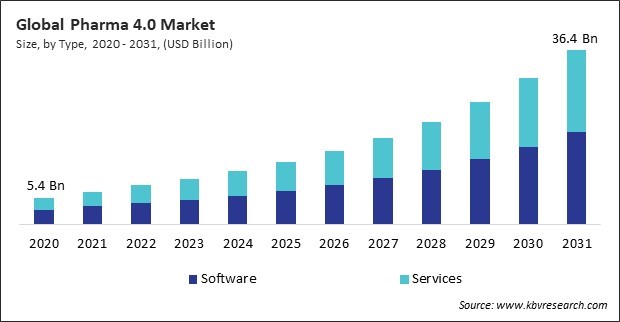
The major strategies followed by the market participants are Partnerships as the key developmental strategy to keep pace with the changing demands of end users. For instance, In July, 2024, Dassault Systemes SE partnered with Mistral AI, a French AI company, to bring advanced AI, including large language models (LLMs), to industries. This partnership offers LLMaaS through Dassault's secure OUTSCALE infrastructure, empowering customers with AI-powered virtual twin experiences for industrial transformation, sustainability, and innovation, while preserving security and intellectual property. Moreover, In February, 2024, IBM Corporation teamed up with Wipro, an Indian IT company, to launch an Enterprise AI-Ready Platform, leveraging IBM's watsonx AI and data tools to offer clients customizable, integrated AI environments. This new service would enhance AI adoption with improved automation, governance, and flexibility for various industry applications.
Based on the Analysis presented in the KBV Cardinal matrix; Microsoft Corporation is the forerunner in the Pharma 4.0 Market. Companies such as Amazon Web Services, Inc., Cisco Systems, Inc., Oracle Corporation are some of the key innovators in Pharma 4.0 Market. In September, 2024, Oracle Corporation teamed up with AWS, a cloud computing company, to launch Oracle Database on AWS, enabling customers to access Oracle Autonomous Database and Exadata Database Service within AWS. This partnership offers seamless integration, improved database management, AI, and analytics, helping businesses accelerate cloud migration, modernize IT, and drive innovation across industries with enhanced performance and flexibility.
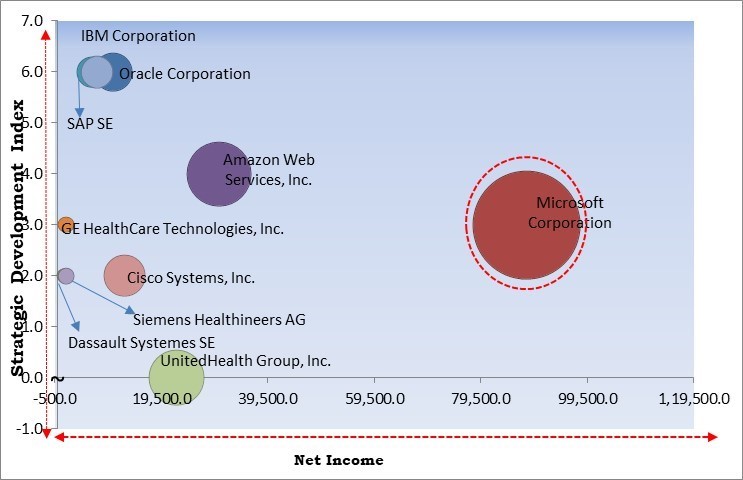
The pandemic eventually accelerated the adoption of this 4.0 technologies as companies recognized the need for resilient, agile, and efficient manufacturing systems. The pressure to develop and produce COVID-19 vaccines quickly demonstrated the value of AI, automation, and IoT for optimizing production processes. These 4.0 tools, like predictive analytics and remote monitoring, gained widespread attention as pharmaceutical firms sought to minimize disruptions and prepare for future crises. The long-term effect of the pandemic has been a stronger push toward digital transformation in the pharmaceutical industry. Thus, the pandemic had an overall negative impact on the market.
The ability to process vast amounts of data in real-time allows pharmaceutical companies to adopt predictive maintenance strategies, where AI-driven analytics can detect potential equipment failures long before they happen. This capability minimizes downtime, improves overall productivity, and reduces operational costs. In order to identify subtle changes in performance that may indicate a problem, AI systems perpetually monitor machinery by utilizing historical data and machine learning algorithms. Hence, all these factors will aid in the growth of the market.
Digital transformation and cloud technologies are pivotal in advancing the pharmaceutical industry under the 4.0 framework. The United Nations has stated that digital technologies have advanced at a rate that surpasses any innovation in history, affecting approximately 50% of the population of the developing world in a mere two decades and dramatically altering societies. Thus, the increasing digital transformation across healthcare verticals supports the market's growth.
These 4.0 calls for an extensive modernization of existing manufacturing infrastructure, which includes replacing outdated machinery with cutting-edge equipment, such as IoT-enabled devices, automation systems, and robotics. Additionally, companies must invest in advanced software solutions like artificial intelligence (AI) and machine learning (ML) platforms to enable predictive analytics, quality control, and data integration. Hence, the combination of high upfront capital and ongoing costs creates a significant obstacle to the widespread adoption of these 4.0 solutions, slowing the market’s overall growth trajectory.
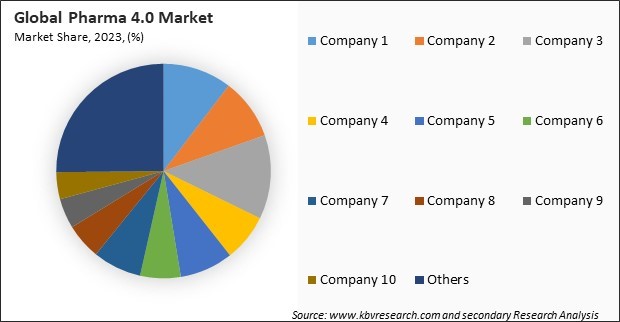
The leading players in the market are competing with diverse innovative offerings to remain competitive in the market. The above illustration shows the percentage of revenue shared by some of the leading companies in the market. The leading players of the market are adopting various strategies in order to cater demand coming from the different industries. The key developmental strategies in the market are Partnerships & Collaborations.
Based on type, this market is bifurcated into software and services. The services segment procured 45% revenue share in this 4.0 market in 2023. This segment includes various support services, including implementation, consulting, training, and maintenance. As pharmaceutical companies adopt new digital tools and technologies, they rely on specialized services to ensure smooth integration, effective utilization, and long-term maintenance of these systems.
By application, this market is divided into drug discovery & development, manufacturing, supply chain management, and others. The supply chain management segment garnered 22% revenue share in this 4.0 market in 2023. Integrating digital technologies, such as blockchain, IoT, and advanced analytics, has revolutionized the pharmaceutical supply chain, providing greater transparency, security, and efficiency.
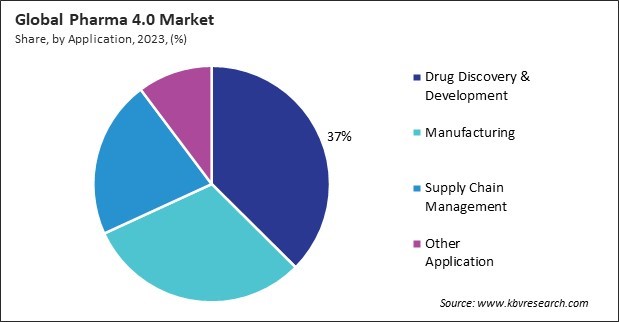
Based on end use, this market is segmented into pharma & biotech companies, healthcare providers, and CRO & CDMO. The CRO & CDMO segment acquired 33% revenue share in this 4.0 market in 2023. The CRO (Contract Research Organizations) & CDMO (Contract Development and Manufacturing Organizations) play a pivotal role in supporting pharmaceutical and biotech companies by offering outsourced research, development, and manufacturing services.
On the basis of technology, this market is classified into AI & ML, big data analytics, IoT, blockchain technology, and others. The blockchain technology segment recorded 9% revenue share in this 4.0 market in 2023. Blockchain's ability to provide secure, transparent, and immutable records has made it a valuable tool for ensuring drug safety and compliance in the pharmaceutical industry.
Free Valuable Insights: Global Pharma 4.0 Market size to reach USD 36.4 Billion by 2031
Region-wise, this market is analyzed across North America, Europe, Asia Pacific, and LAMEA. The Europe segment witnessed 29% revenue share in this 4.0 market in 2023. Countries like Germany, the United Kingdom, and Switzerland are key players in adopting Pharma 4.0 technologies, focusing on improving the efficiency of drug manufacturing, regulatory compliance, and supply chain management.
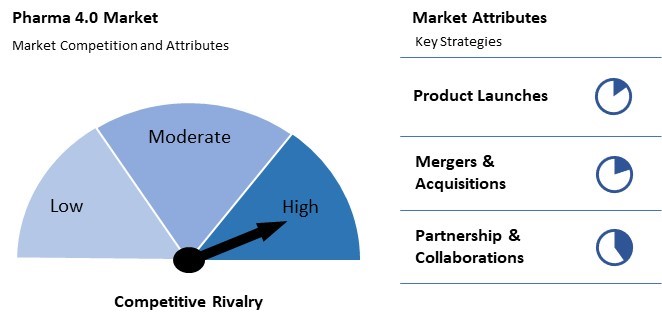
Competition in the Pharma 4.0 Market is driven by advancements in digital transformation and automation. Companies are focused on integrating advanced technologies like IoT, AI, and data analytics to enhance drug manufacturing and supply chain efficiency. Regulatory compliance, cost reduction, and innovation in smart manufacturing systems are key competitive factors.
| Report Attribute | Details |
|---|---|
| Market size value in 2023 | USD 9.5 Billion |
| Market size forecast in 2031 | USD 36.4 Billion |
| Base Year | 2023 |
| Historical Period | 2020 to 2022 |
| Forecast Period | 2024 to 2031 |
| Revenue Growth Rate | CAGR of 18.5% from 2024 to 2031 |
| Number of Pages | 292 |
| Tables | 463 |
| Report coverage | Market Trends, Revenue Estimation and Forecast, Segmentation Analysis, Regional and Country Breakdown, Competitive Landscape, Market Share Analysis, Porter’s 5 Forces Analysis, Company Profiling, Companies Strategic Developments, SWOT Analysis, Winning Imperatives |
| Segments covered | Type, Application, End Use, Technology, Region |
| Country scope |
|
| Companies Included | Amazon Web Services, Inc., SAP SE, Oracle Corporation, Microsoft Corporation, IBM Corporation, GE HealthCare Technologies, Inc., Siemens Healthineers AG (Siemens AG), Cisco Systems, Inc., Dassault Systemes SE, and UnitedHealth Group, Inc. (Optum, Inc.) |
By Type
By Application
By End Use
By Technology
By Geography
This Market size is expected to reach $36.4 billion by 2031.
Rising Integration Of Advanced Analytics And Ai are driving the Market in coming years, however, High Initial Investment Costs Of Pharma 4.0 restraints the growth of the Market.
Amazon Web Services, Inc., SAP SE, Oracle Corporation, Microsoft Corporation, IBM Corporation, GE HealthCare Technologies, Inc., Siemens Healthineers AG (Siemens AG), Cisco Systems, Inc., Dassault Systemes SE, and UnitedHealth Group, Inc. (Optum, Inc.)
The expected CAGR of this Market is 18.5% from 2024 to 2031.
The Software segment generated the highest revenue in the revenue in the Market by Type in 2023, thereby, achieving a market value of $19.2 billion by 2031.
The North America region dominated the Market by Region in 2023, and would continue to be a dominant market till 2031; thereby, achieving a market value of $14.8 Billion by 2031.
Our team of dedicated experts can provide you with attractive expansion opportunities for your business.

 Drivers
Drivers
 Restraints
Restraints
 Opportunities
Opportunities
 Challenges
Challenges
